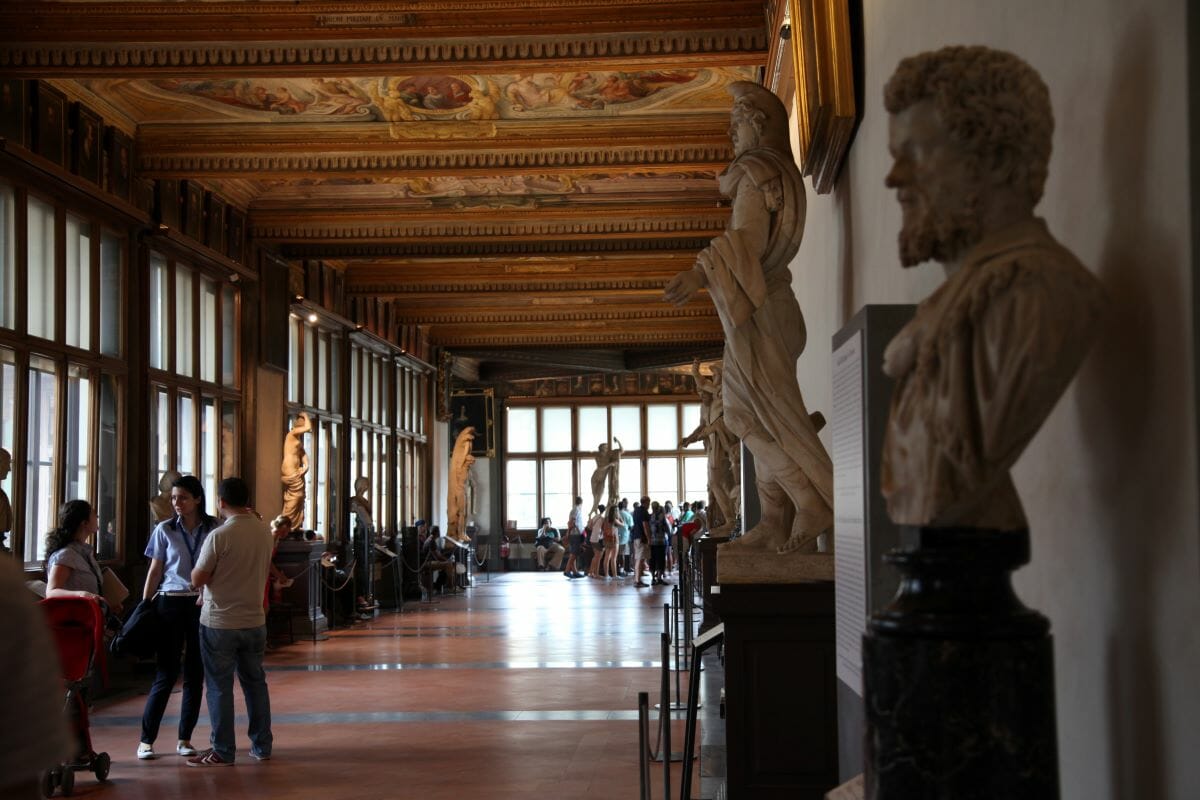
Can’t-Miss Paintings in the Uffizi Gallery: A Comprehensive Visitors Guide
April 14, 2025
The Uffizi Gallery (Galleria degli Uffizi) is the best single museum in the world to see Renaissance paintings. Housed in a cavernous building designed by Giorgio Vassari, it houses a collection that covers some 400 years and innumerable artists including many of Italy’s most famous masters like Giotto, Cimabue, Duccio, Domenico Veneziano, Filippo Lippi, Caravaggio, Paolo Ucello, Sandro Boticelli, and of course, Leonardo, Donatello, Michelangelo, and Raphael.
It would take days to see the entire collection (which also includes sculptures and, believe it or not, over 100,000 drawings and prints) but most visitors just come for the big names, and to soak up the beautiful interiors in which their works are displayed.
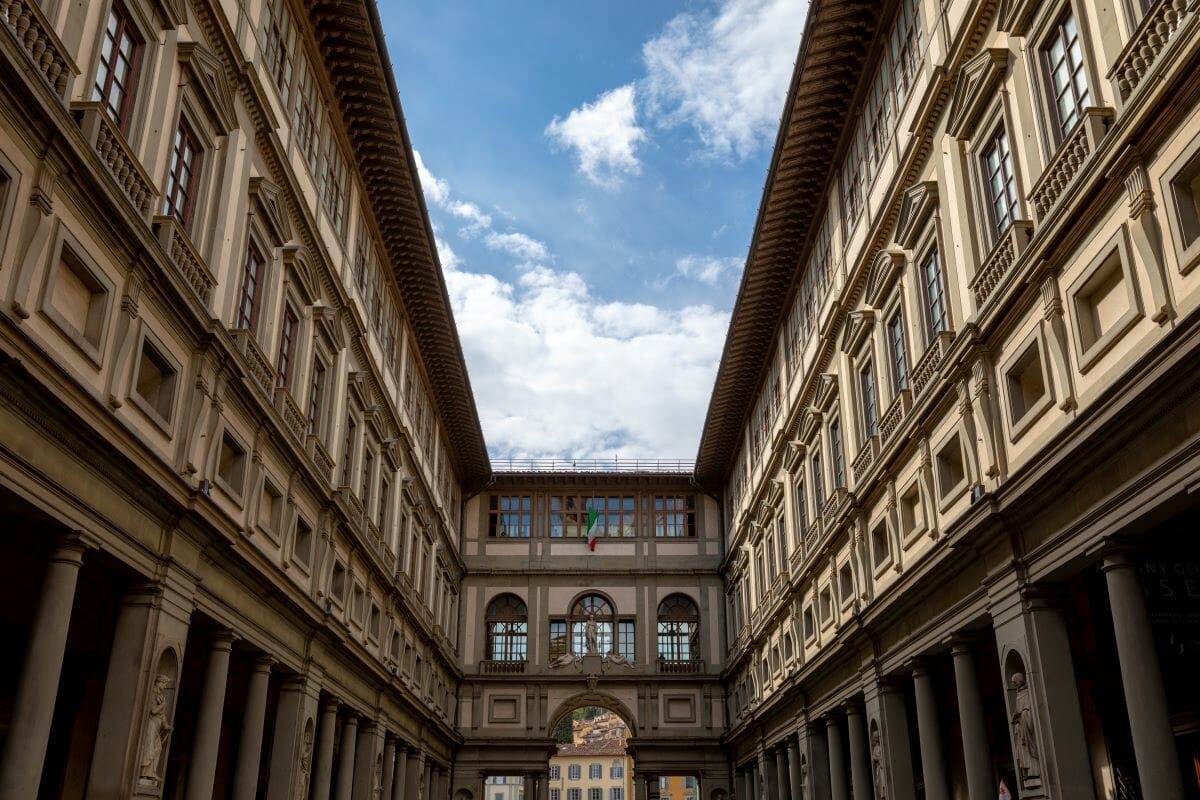
The Uffizi Gallery is situated in the historic center of Florence along the Arno River. Photo credit: Matt Twyman
Table of Contents
ToggleWhat to See at The Uffizi Gallery
The Uffizi Building & Historical Background
In 1599 the great architect, painter, and sometimes-art-historian Giorgio Vasari was commissioned by the Medici family (who basically made the rules in Florence for the better part of 400 years—and there are plenty of Medici attractions in Florence to explore) to design an office building for the Florence judiciary. What he came up with is probably one of the grandest and most beautiful buildings ever constructed for government bureaucrats.
It wasn’t until Cosimo I de Medici died in 1574 that the top floor became a display area for some of the family’s sizable art collection. Over the years, the art slowly replaced the bureaucrats until the 18th century when the Medici dynasty died out, and only a visionary piece of political maneuvering by the last Medici heiress, Anna Maria Luisa, ensured that the entire collection stayed in the museum.
Her famous patto di famiglia basically stated that when she died her inherited fortune—i.e. the entire accumulated estate of the Medici family—would not go to her children, but instead be bequeathed to the Tuscan state on the condition that it would never leave Florence. Thus the Uffizi became one of the world’s first art museums officially opening to the public in 1765.
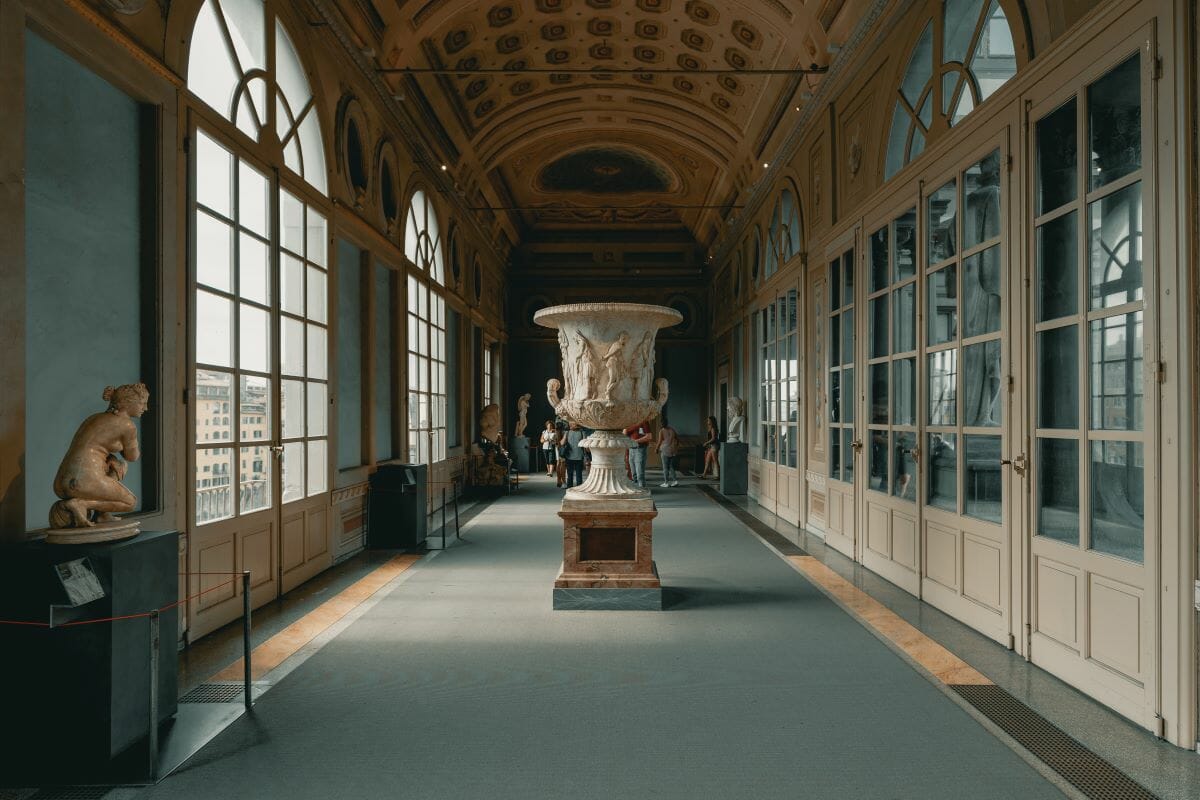
The construction of The Uffizi Gallery began in 1560 during the Renaissance period in Florence. Photo credit: Clay Banks
Highlighted Paintings & Artists
Duccio, Giotto, and Cimabue
Ever wondered what painting was like before the Renaissance? In word: flat. The expressions are flat, the poses are flat, and even the backgrounds are flat. After all, artists hadn’t figured out their perspective yet. If you take a look at the works of Cimabue and Duccio, this flatness is still present but on the way out. Then contrast them with Giotto’s “Majesty” and you’ll instantly experience a frisson of innovation.
At the end of the 13th century and beginning of the 14th artists started adding depth and life to their paintings, making the figures and themes more human instead of strictly divine. Giotto’s “Majesty” brings out the body of the Madonna in ways that were unthinkable 100 years before.
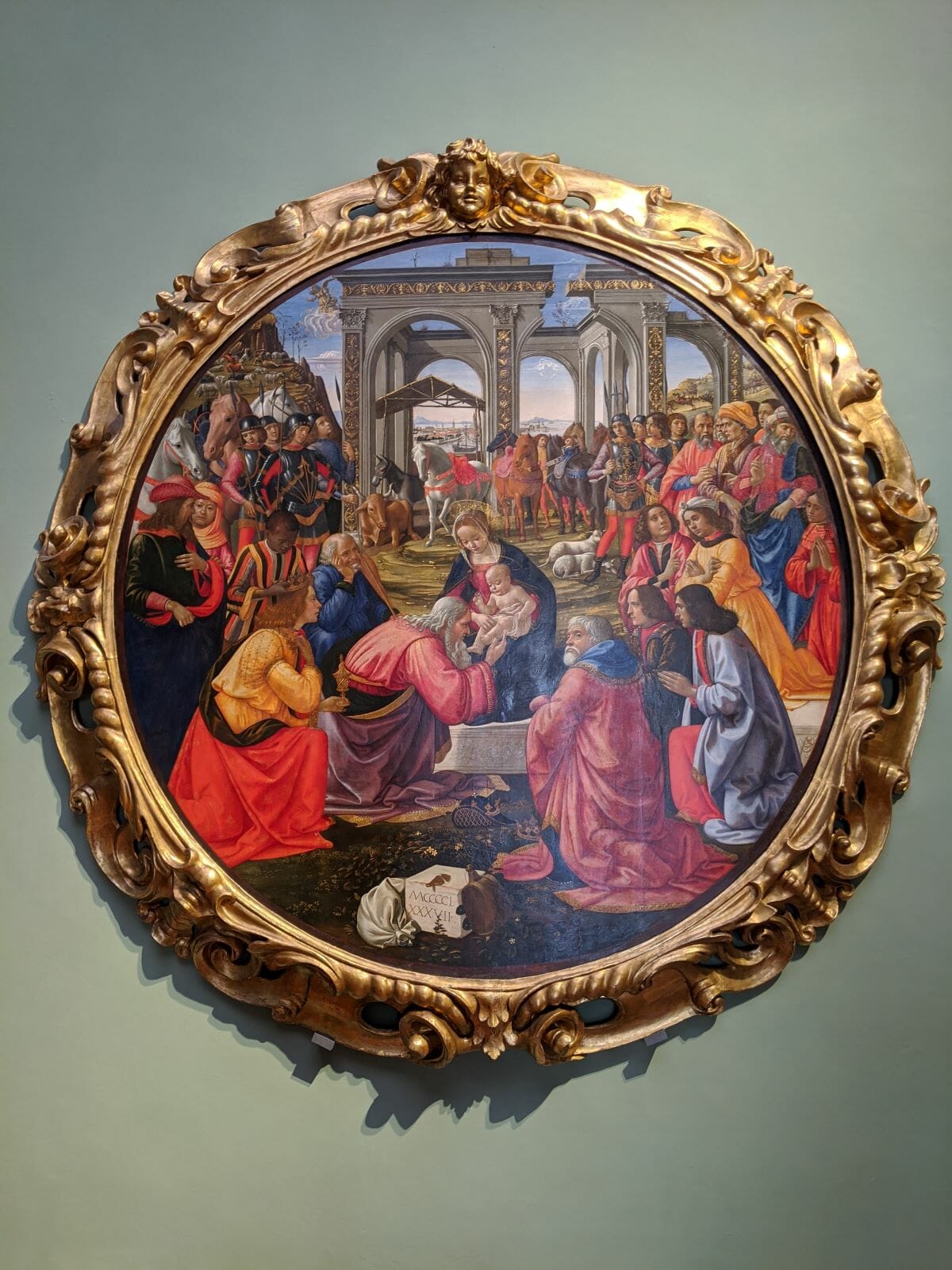
The Renaissance was a cultural and artistic movement that began in Florence, and later spread to other parts of Europe. Photo credit: Tzenik
Ucello, Veneziano and Lippi
In the early Renaissance, humans were brought even more to the fore and paintings became more and more realistic as the works of ancient thinkers were rediscovered and used to power the arts in new and exciting directions.
Paolo Ucello’s early masterclass in the use of mathematical perspective (newly discovered at the time) is called the Battle of San Romano. Meanwhile Domenico Veneziano abandoned the flat, divine light that was a staple of Medieval paintings in favor of nuanced natural light which illuminates the subjects of Santa Lucia de’ Magnoli Altarpiece in new and beautiful ways. Finally, human love and other emotions jump off the canvases of Filippo Lippi in his touchingly intimate representations of the Virgin Mary.
Michelangelo
Chances are your other main art stop in Florence is the Accademia to see Michelangelo’s David, but don’t make the mistake of thinking that after that you have “done” Michelangelo. He only has one painting in The Uffizi but it’s extraordinary (in fact, there are many exquisite works and paintings by Michelangelo).
The Doni Tondo is a tempera painting of the holy family which is not only one of the masterworks from the 16th century, it helped lay the foundations for the entire mannerist painting movement which featured explosive colors and contorted poses that showed off the human figure. Looking at it today, the colors are so vivid and the expressions so natural it’s hard to believe that it was painted over 500 years ago.
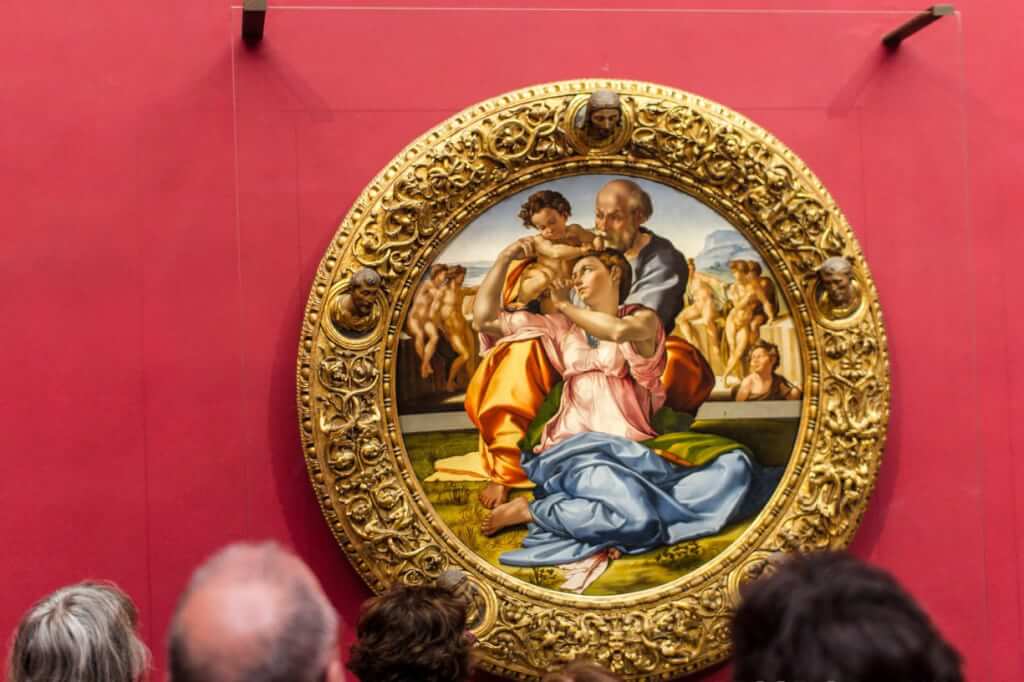
Allow yourself at least two hours to explore and get to know the famous works inside The Uffizi Gallery.
Raphael
The Medici’s collection of Raphael’s work is the largest in the world and its spread across The Uffizi Gallery and the Pitti Palace. The crowning achievement from the time in his life that Raphael actually spent in Florence is Madonna of the Goldfinch, which underwent an extensive restoration in 2008 and is now back and better than ever.
Leonardo Da Vinci
The great artist, inventor and polymath was a Florentine through and through. In fact, he had a big influence on the young Raphael when that paint came to Florence to study and paint. Both of Leonardo’s works in The Uffizi were painted when he was still a young man.
The first is actually a painting by his master, Verrocchio, which Leonardo simply added an angel to. But what an angel it is. All the other poor angels in the painting pale in comparison. The second painting, The Annunciation, showcases Leonardo’s now canonical painting technique called sfumato which avoids sharp lines in favor of smoky, blurred edges that adds softness and realness to his images once thought impossible.
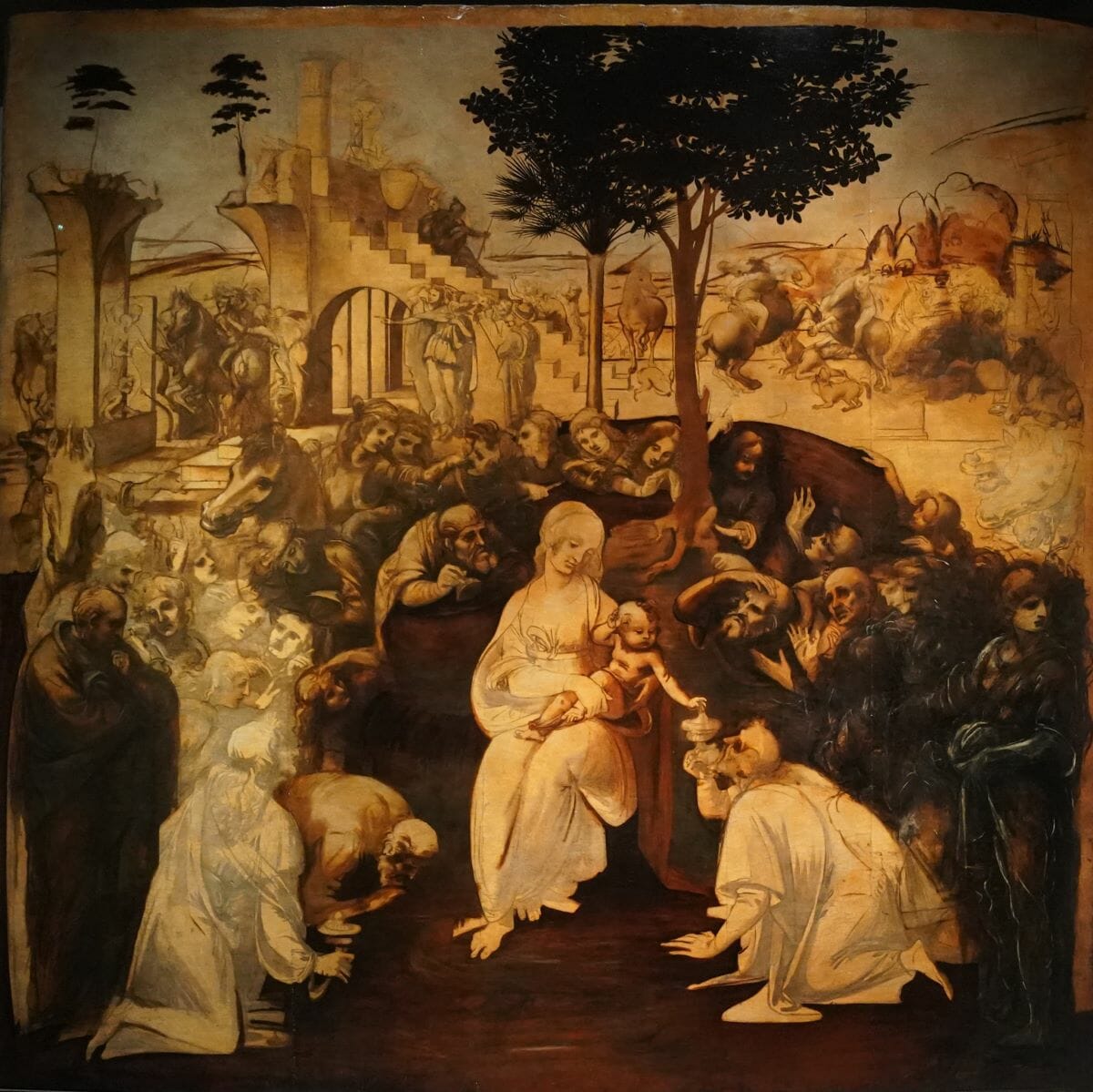
The Adoration of the Magi is an unfinished early painting by Leonardo da Vinci. Photo credit: Andrea Guagni 3,7 Million
Botticelli
Sandro Botticellis is a bit of an outlier in The Uffizi pantheon because his work is generally considered to have regressed in his later years due to an association with the fanatical friar Girolamo Savonarola, who famously hosted a big art burning bonfire in Florence in 1497.
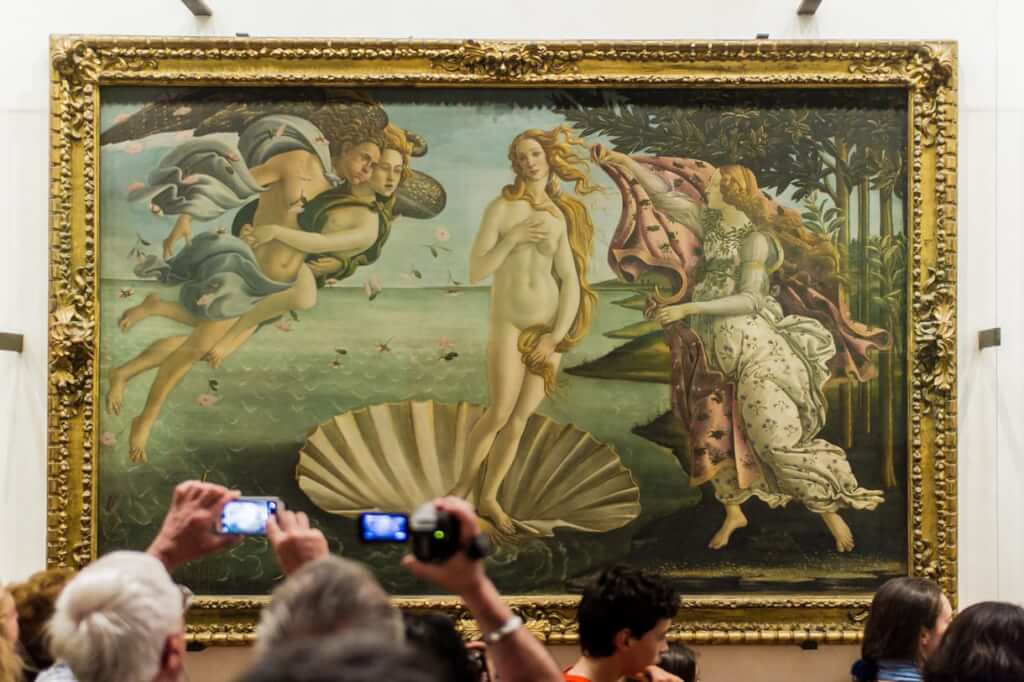
The Birth of Venus by Botticelli.
Boticelli produced two of the most beautiful and enigmatic paintings of the entire Renaissance: The Birth of Venus, and Primavera. Boticelli’s Venus may have been modeled after a married noblewoman with whom he had an unrequited love interest. If so, we can hardly think of a more fitting tribute.
Though there are many theories, Primavera has thus far resisted all attempts to pin down even basic meanings and symbolisms. What we can discern is the defining confluence of Christianity and ancient pagan philosophy (ie: neoplatonism) that defined much of the artistic currents of the Renaissance.
Caravaggio
No one stands out from the late Renaissance period quite like the quintessential bad boy of art: Caravaggio. As troubled in his personal life as he was talented with a brush, Caravaggio brought a level of realism to painting that was thus far unheard of.
Often using poor people and prostitutes for models, he recreated the bible in the image of the poor and downtrodden while reveling in the dichotomies of light and darkness that he seemed to effortlessly evoke with chiaroscuro. Most of the Caravaggio’s in The Uffizi Gallery are earlier works from before he had fully developed as a painter, but they have as much impact on the viewer today as they did when they were first painted.
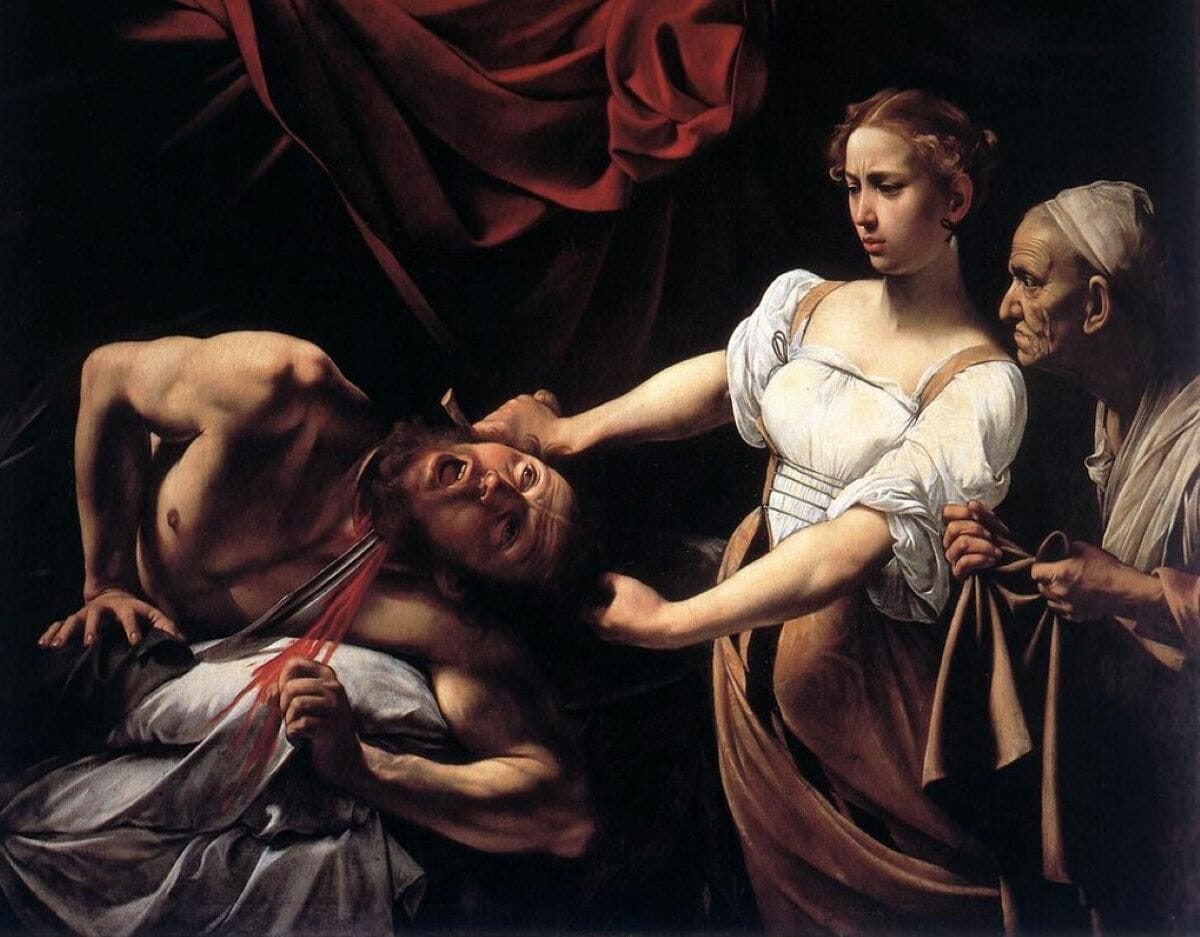
Caravaggio was known for his dramatic use of chiaroscuro, implementing the bold contrast between light and shadow in his paintings. Photo credit: jasonwryan
Tips for Visiting The Uffizi Gallery
Planning your Visit
For the full, up to date schedule of The Uffizi Gallery, consult the official Uffizi website. Keep in mind, like most museums throughout Italy, it’s closed every Monday, January 1, and December 25 (and some other important Italian holidays). Always consult the schedule ahead of your visit to avoid any issues.
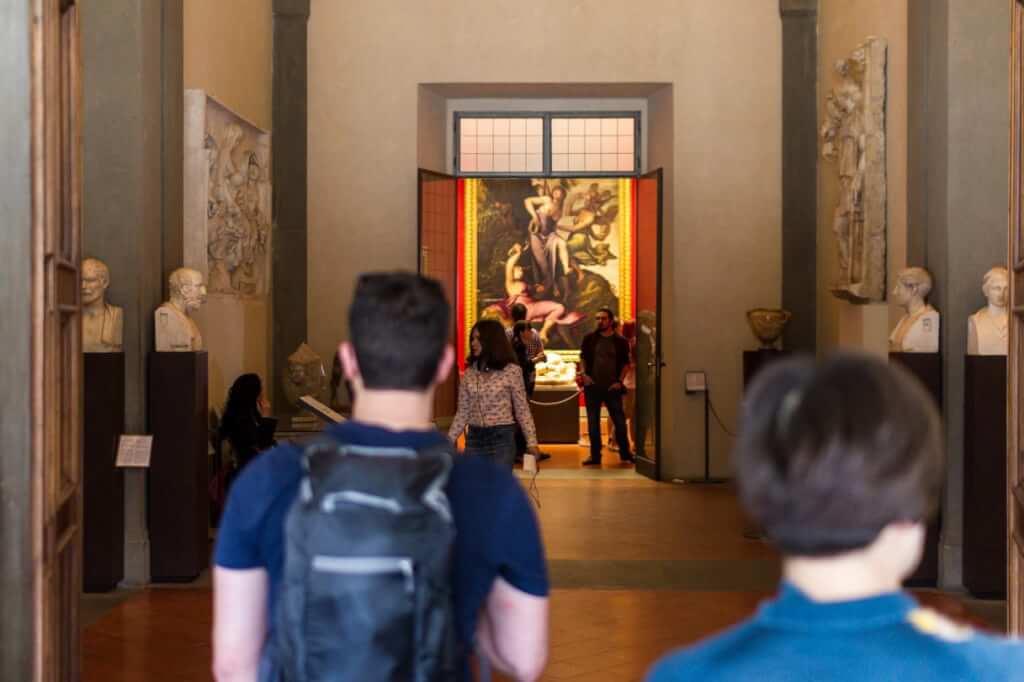
Consult the specific rules and operating details of The Uffizi.
Tips for Visiting The Uffizi Gallery
In order to get the most out of your experience, there are a few things to keep in mind.
First things first, it is good to know that there are certain things you are not allowed to bring inside The Uffizi Gallery, including:
- Umbrellas
- Large Bags
- Backpacks
- Selfie Sticks
- Drinks
You may leave all of these items in the cloakroom, which is free. The cloakroom is immediately after the entrances under the Eastern colonnade of the courtyard.
The Uffizi Gallery offers excellent wheelchair accessibility, but there are a couple of important considerations to keep in mind:
- While the wheelchair entrance ramp on the Via della Ninna is generally accessible, please be aware that there is a minor 3cm step along the way.
- In case your wheelchair doesn’t fit into the elevator, the gallery provides the option to exchange it for one of the appropriate size at the entrance for your convenience.
Unlike the Accademia, you are allowed to take photos at The Uffizi Gallery. You cannot, however, use flash photography, take photographs or videos using selfie sticks, light stands, tripods or any kind of professional equipment. For full details of the rules, please check their website.
The Best Time to Visit The Uffizi Gallery
Along with the Florence Cathedral and the Accademia, The Uffizi is one of the most popular attractions in Florence. Although you can reserve tickets in advance you might still end up waiting to get in because only 900 people are allowed in the building at any one time. Be mindful that the door policy is strictly one out one in. The only way to avoid the entrance lines completely is by going on a guided tour.
Florence’s high season usually runs from April straight through to the end of September/middle of October. Because it is something of a Mecca for serious art buffs, arriving early to beat the lines does not always work. The museum itself suggests coming around lunchtime when both entrance lines and crowds in the galleries can be smaller due to people taking a break to eat.
Visiting Uffizu Gallery FAQ
What are the must-see paintings in the Uffizi art gallery, including the famous paintings of Uffizi?
The Uffizi art gallery is home to masterpieces by Botticelli, Leonardo da Vinci, Caravaggio, and others. It features iconic works such as The Birth of Venus and Primavera, which are among the famous paintings of Uffizi that you should not miss.
How can I plan my visit to the Uffizi art gallery?
Start by checking the official Uffizi website for the latest ticket prices, opening hours, and any special events. Our guide also provides practical tips on the best times to visit to avoid crowds.
What are the opening times and ticket policies at the Uffizi art gallery?
The gallery follows a specific schedule and strict ticketing guidelines. For the most accurate and up-to-date details, please refer to the official Uffizi website before planning your visit.
Can I take photographs inside the Uffizi art gallery?
Photography is permitted, but without flash or professional equipment such as selfie sticks or tripods. Make sure to review the gallery’s photography guidelines to ensure you comply with their rules.
Which artists and works are prominently featured at the Uffizi art gallery?
The collection includes works from artists such as Giotto, Botticelli, Raphael, Michelangelo, Leonardo da Vinci, and Caravaggio. These masterpieces represent the rich heritage of Renaissance art and are key highlights of the gallery.
Is the Uffizi art gallery wheelchair accessible?
Yes, the gallery is designed with accessibility in mind and offers accommodations for wheelchair users. For any specific accessibility requirements, it is advisable to consult the official website before your visit.
Update notice: April 14, 2025
Want to see the very best of Florence in one day? Skip long lines to see David at the Accademia, marvel at the finest Renaissance pieces in The Uffizi, then take to the streets to explore the best of Florence with a local on our Florence in a Day with David, Duomo, Uffizi & Walking Tour.
by Beatrice M.
View more by Beatrice ›Book a Tour

Pristine Sistine - The Chapel at its Best
€89
1794 reviews

Premium Colosseum Tour with Roman Forum Palatine Hill
€56
850 reviews

Pasta-Making Class: Cook, Dine Drink Wine with a Local Chef
€64
121 reviews

Crypts, Bones Catacombs: Underground Tour of Rome
€69
401 reviews

VIP Doge's Palace Secret Passages Tour
€79
18 reviews

Legendary Venice: St. Mark's Basilica, Terrace Doge's Palace
€69
286 reviews









